-
Posts
1,130 -
Joined
-
Last visited
-
Days Won
3
Content Type
Profiles
Forums
Gallery
Events
Blogs
Posts posted by PeterStudz
-
-
16 minutes ago, Kon said:
Excellent report and glad you saw it. I have been up T 5 the past two mornings to be greeted by clouds. Third time lucky tomorrow morning?
Outstanding pictures from a mobile!
Thanks @Kon , I’m certainly not a morning person but it was nice being out early and seeing the sunrise etc. I might do similar tomorrow morning and as it’s not a school night my daughter might be able to join and have a look. That’s if she wants to get out of bed that early. It’s not like the summer!
And good luck. Although diffuse I was surprised that it was that bright. You should get a better view being in a darker location.
The images are in RAW format so I’ll have a go at editing. Haven’t had the time today.
-
 2
2
-
-
I also have a SkyWatcher 200p Dob and I’ve never had dew form on the primary even when it’s been outside for several hours on a dewy night. However, without a simple dew shield the secondary mirror (being closer to the opening) can dew up. But condensation will form very quickly once the telescope is brought inside. When you were observing are you sure that dew formed on the primary and not just the secondary? I can never really see my primary in the dark when outside.
But I’ve found that a dew shield will practically prevent dew issues on my mirrors. With a dew shield I’ve had the telescope out for up to 4 hours and it’s stayed dew free. Doesn’t mean it can’t happen but it’ll delay it.
I made mine out of a cheap yoga mat. However, the mat I got was a bit thin and on its own and would not hold shape. So I stuck on some veneer that I had down the shed. You don’t need to go to that length. A thicker camping mat will work perfectly on its own and is very simple to make.
-
Second time lucky! I was up very early yesterday morning only to be greeted (despite the forecast) with clouds. But this time it was worth getting up at silly o’clock in order to spot comet C/2022 E3 (ZTF). Up at 4:30am and looking outside there were some high clouds, but fortunately clearing away to the SW. Transparency OK but I’ve had better. At least I could easily see the keystone of Hercules! Got the 200p Dob on EQ platform to cool and made a coffee. Tried to see the comet in binoculars but failed. Started observing with the Dob around 5am.
I’m in Southampton - Bortle 7 - so star hopping can be a chore. But all I did was line up on Eta Her in the Hercules Keystone and go straight up for glory, looking in the 9x50 RACI and back to the low power StarGuider 25mm eyepiece every now and then. The idea being that I could go back and do a more sensible star hop if I couldn’t find it. But no need as I spotted the comet quickly. Could only just see it in the finder but in the eyepiece it immediately jumped out as something I haven’t seen before. Like an out of focus star surrounded by a fuzzy patch of slightly elongated light.
I switched on the EQ platform and played around with a few eyepieces. Looked best in the StarGuider 12mm. Then, at about 5:45am I had a go at taking some smartphone snaps. Just using the 25mm in order to reduce any star trailing. Was pleasantly surprised to get the max exposure of 30 seconds for my iPhone with minimal star trailing. The single shot snaps are just cropped and rotated so that north is up. No other editing although I might try later - can definitely be improved. And the light pollution skyglow is annoying! Must invest in a better 25mm-ish as I’ve had to crop to remove some of the worse distorted stars around the edges. Won’t win any prizes but apart from colour the snaps are a good representation of what I could see in the eyepiece. The second image is just with the camera 2x zoom
Finished off by looking at M13. I haven’t seen that in a while! Brighter than the comet (obvious in the RACI) but about the same sort of size. After yet another coffee and feeling a bit cold, I finally packed up at about 6:20am.
This is the first comet that I’ve seen in a telescopes and only the second comet that I’ve seen in my life. The other being Hale–Bopp. But then you could see that out of the window at a sensible hour.
-
 16
16
-
-
Second time lucky! And for once it was worth getting up at silly o’clock in order to spot comet C/2022 E3 (ZTF). first comet I’ve seen in a telescope and only the second comet I’ve seen in my life. That being Hale–Bopp. But then you only needed to look out of the window at a sensible time of night to see that.
Even managed to take some smartphone snaps. I’ll post a proper report in a bit.
-
 7
7
-
-
Nice images! I was doing almost exactly the same yesterday. I’ve written it up in the smartphone imaging section. That AR3090 is a magnificent thing!
-
 1
1
-
-
I had another look at the sun in white light on Wednesday, around mid-day from Southampton.
Only a few high thin clouds around so better conditions than my last attempt at the weekend. Toward the end of observing I took a few snaps. Wonderful views at the moment. And the sunspot AR3190 is a beast! I tried for a close-up with a BST StarGuider 12mm (much more and things started to go fuzzy). The resulting image doesn’t do it justice - visually there were so many more details, especially in and around the penumbra of AR3190.
SkyWatcher 200p Dob. DIY filter using Baader AstroSolar Safety Film. Starguider 25mm & 12mm, iPhone 14 Pro held onto the eyepiece using a basic smartphone mount. Single shot RAW Images taken using the stock camera app. Basic editing and crop using the stock camera app.
-
 4
4
-
-
15 minutes ago, PeterStudz said:
I made the effort to get up at 4:30am here in Southampton in order to try and get a look at Comet C/2022/ E3 (ZTF) - I wish they’d name it as I can never remember all of that! For the time being I’ve named it Comet Bob
 .
.
But sadly, despite being crystal clear when I went to bed, there was significant hazy high cloud. I could see the brightest starts like Vega & Arcturus but naked eye none of the stars in Hercules. I did play around with the binoculars for a bit. A bright satellite came directly overhead going roughly south to north. Then I gave up and went back to bed
 . Will try again!
. Will try again!
Sorry, wrong section!
-
 1
1
-
-
I made the effort to get up at 4:30am here in Southampton in order to try and get a look at Comet C/2022/ E3 (ZTF) - I wish they’d name it as I can never remember all of that! For the time being I’ve named it Comet Bob

But sadly, despite being crystal clear when I went to bed, there was significant hazy high cloud. I could see the brightest starts like Vega & Arcturus but naked eye none of the stars in Hercules. I did play around with the binoculars for a bit. A bright satellite came directly overhead going roughly south to north. Then I gave up and went back to bed . Will try again!
-
 4
4
-
-
I made the effort to get up at 4:30am here in Southampton in order to try and get a look at Comet C/2022/ E3 (ZTF) - I wish they’d name it as I can never remember all of that! For the time being I’ve named it Comet Bob
 .
.
But sadly, despite being crystal clear when I went to bed, there was significant hazy high cloud. I could see the brightest starts like Vega & Arcturus but naked eye none of the stars in Hercules. I did play around with the binoculars for a bit. A bright satellite came directly overhead going roughly south to north. Then I gave up and went back to bed
 . Will try again!
. Will try again!
-
 2
2
-
-
Brilliant! I should really give my new phone a go.
-
 1
1
-
-
The night started off with high cloud here in Southampton. And after a successful night last night I was less keen. But looking outside now it’s crystal clear. Cold of course. Now I kind of wish I’d made the effort!
-
3 hours ago, geoflewis said:
Hi Stu and others that were observing Mars last night. I have just posted my fully processed series of three images from last night in case you want to take a look.....
There was definitely cloud on the western limb over Aurorae Sinus, but they either disipated or rotated out of view as the evening progressed. A similar story with clouds at the south pole too, though they seemed to hang around longer. I'm not seeing any evidence of a bright spot there, through if it was only seen fleetingly, it will likely be lost when stacking 60k frames.
Very interesting, thanks for that. I started viewing from about 20:30 and it’s possible that the clouds on the western limb had gone by then. Or, just as likely, I simply missed/didn’t see them.
The white spot right on the South Pole was just that - a circular white spot. It came and went with the seeing but was there for a while. I could still notice it when I finished at around 22:00.
-
 2
2
-
-
-
6 minutes ago, bosun21 said:
£80 ! that’s fantastic 😫 I am getting one made for me by David Lukehurst for £350. I got the heavy duty one incase I go bigger than my 12”.
I did have a few bits already. And simple stuff like screws, nuts and bolts which helped.
The David Lakehurst platforms look great and have good reputation. And when you consider time and labour £350 isn’t bad for what you get!
-
 1
1
-
-
The nudging does become second nature after a time, although I well know that there are advantages to some sort of tracking, especially at high magnification and on targets like the planets.
I don’t think you can buy an add on SynScan Goto kit. There are similar kits like this, although I haven’t seen a UK seller. And I have no experience of it…
https://astro-gadget.net/gadgets/control-of-telescopes/dobsondream4
Another alternative is a EQ platform. You can buy one (not cheap) or make one like I did. There’s some good information and instructions here…
It cost me about £80. Was surprisingly simply to make. The only tools that I used were a panel saw, hacksaw and an electric drill. Obviously not GoTo but for visual it tracks really well and now I could not do without it.
-
 1
1
-
-
12 minutes ago, Stu said:
Thanks Both. So it wasn’t imagined which is great. Peter, your description matches my observation, interesting! I do find that sometimes these ice features show visually but not always in images which is weird. I can just about see some brightening on the limb in Geoff’s image.
This is a good point. Even that smartphone image that I took back in December showed the clouds on the limb that we could both see, but it wasn’t as obvious on the image as when we both saw it visually. And visually it really did stand out - you couldn’t miss it.
And another point. If I’m familiar with a target (I’ve looked at Mars a lot recently) then anything out of the ordinary tends to stand out when I see it. Even if very subtle. Eg if I didn’t know Mars, or hadn’t looked at it recently, I could well have missed that small dot of white at the South Pole.
-
 2
2
-
-
19 minutes ago, Stu said:
I was convinced that I could see a small dot of brightness on the South Pole too. It was far from obvious and came and went with the seeing. But made an impression as it was something new to me. Although I didn’t notice anything on the limb.
At some point ice is going to appear back at the poles. I was hoping that when the North Polar Hood thinned we might see some ice but not so.
-
 1
1
-
 1
1
-
-
Amongst other targets I was observing Mars tonight. Seeing was decent and I could make out a now thin North Polar Hood and some albedo features to the south. But it wasn’t decent until Mars was nice and high in the sky, from about 8:30pm.
Mars also changes/rotates and with have more interesting faces. Look at the first picture. This is what it was like when I was viewing tonight. This picture doesn’t show the Polar Hood but even so it’s a bit “dull” even if you could actually see an image as detailed as that in your telescope. It’s better if you have a face like in the second image. For a start the contrast is far better.
I’ve been observing Mars since July or it might have been as far back as late June. I’m new to this and it’s my first Mars opposition. Well, unless you include when I was a kid, back in mid 1970-something when I saw Mars in a small reflector. Then it was no more than a small reddish dot.
I too have an 8” Dob and I’ve been chuffed at what I’ve seen. From a southern ice cap back in the summer - even though it was tiny you couldn’t miss it - to some lively views of the North Polar Hood and strong albedo features (interesting faces of Mars) back in November. Then the North Polar Hood was far more extensive and very obvious. Even on poor nights you couldn’t miss it. On a few nights I could even see clouds. When you think what you are seeing, clouds on another planet from an urban back garden, it’s amazing.
I also have an EQ platform which means no, or only very occasionally nudging. I find that this helps me see more. I also always use a dew shield. Not just to keep dew at bay but to try and keep out any stray light. NOT getting use to the dark (eg I’ll look at the screen of my smartphone) helps with colour contrast. I also find that a variable polarising filter can make a difference too.
Basically keep trying and have patience. Some nights have far better seeing & transparency than others. Try and observe when Mars is high. And it helps if Mars is in a position where it’s showing some good details, eg nice albedo features, Polar Hood, ice cap and clouds.
It’s also staring to get smaller now and no longer a complete disc.
-
 3
3
-
-
6 minutes ago, Stu said:
Thanks Peter. Useful to know. I’ve just always found my results are sharper and clearer with ProCam so I’ve tended to stick with that.
I’ll give ProCam another go. I have an iPhone Pro now so it’s quite possible that it’s more suitable for that than a regular iPhone.
-
-
1 minute ago, Stu said:
Very true that the standard iPhone app is good for up to 30 second exposures, it works well. I do find that for the shorter exposures needed for planets, lunar and solar images, ProCam gives much better control of exposure and focus. It also saves RAW files, not sure if the standard app does too? Totally agree that Snapseed has an annoying interface, I generally only use it for the curves feature which is very handy for DSO images.
Yes, the standard camera app does save RAW files, although by default the option is hidden. I had to enable it in settings. Once that’s done a “RAW” button will appear in the camera app. For adjusting exposure and focus tapping the screen in the camera app when open with show the automatic focus area & exposure setting. Then tap where you want the focus. Drag the ☀️ icon up/down to change exposure. You can also lock these settings. I guess ProCam can give more but I’ve never needed more than this.
-
9 minutes ago, Stu said:
I find ProCam really good, particularly for solar, lunar and planetary images. Nightcap and others probably better for deep sky.
Again, I find PS Express really good for the same targets as ProCam, whilst Snapseed is probably better for at least some processing on deep sky due to its curves feature.
I haven’t found any major benefit from using ProCam, Nightcap or any other app over the iPhone stock camera app. Sure there can be a benefit but I don’t like fiddling about

For extended exposures modern iPhones stack to a maximum of 30 seconds. This feature is only available via the stock camera app. For some reason apps don’t have access to it. For DSO I’ve found this really useful especially for my simple tracking on a basic EQ (I’ve been using an EQ1 + motor drive for this) or recently my EQ platform.
If possible I’ll do as much editing as I can on the phone using the stock camera app. I think smartphone images should remain simple. Occasionally I’ll use Lightroom or Snapseed, although personally I find the Snapseed interface a little annoying!
-
I had a short session on the sun on Sunday. At the end I took a few smartphone snaps, although by this point I was dodging clouds so far from ideal. And just packed up as it started raining. Worth it as the sun is very active with a lot going on. As usual the view in the eyepiece was far more impressive. And the last image is slightly out of focus, but I was rushing!
SkyWatcher 200p Dob. DIY filter using Baader AstroSolar Safety Film. Starguider 25mm, iPhone 14 Pro held onto the eyepiece using a basic smartphone mount. RAW Images taken using the stock camera app. Basic editing and crop using the stock camera app.
-
 5
5
-
-
Yes, I’ve just come back in after a short session between the clouds. As you suggest it’s really good at the moment. And lucky here too… it’s just stayed raining!













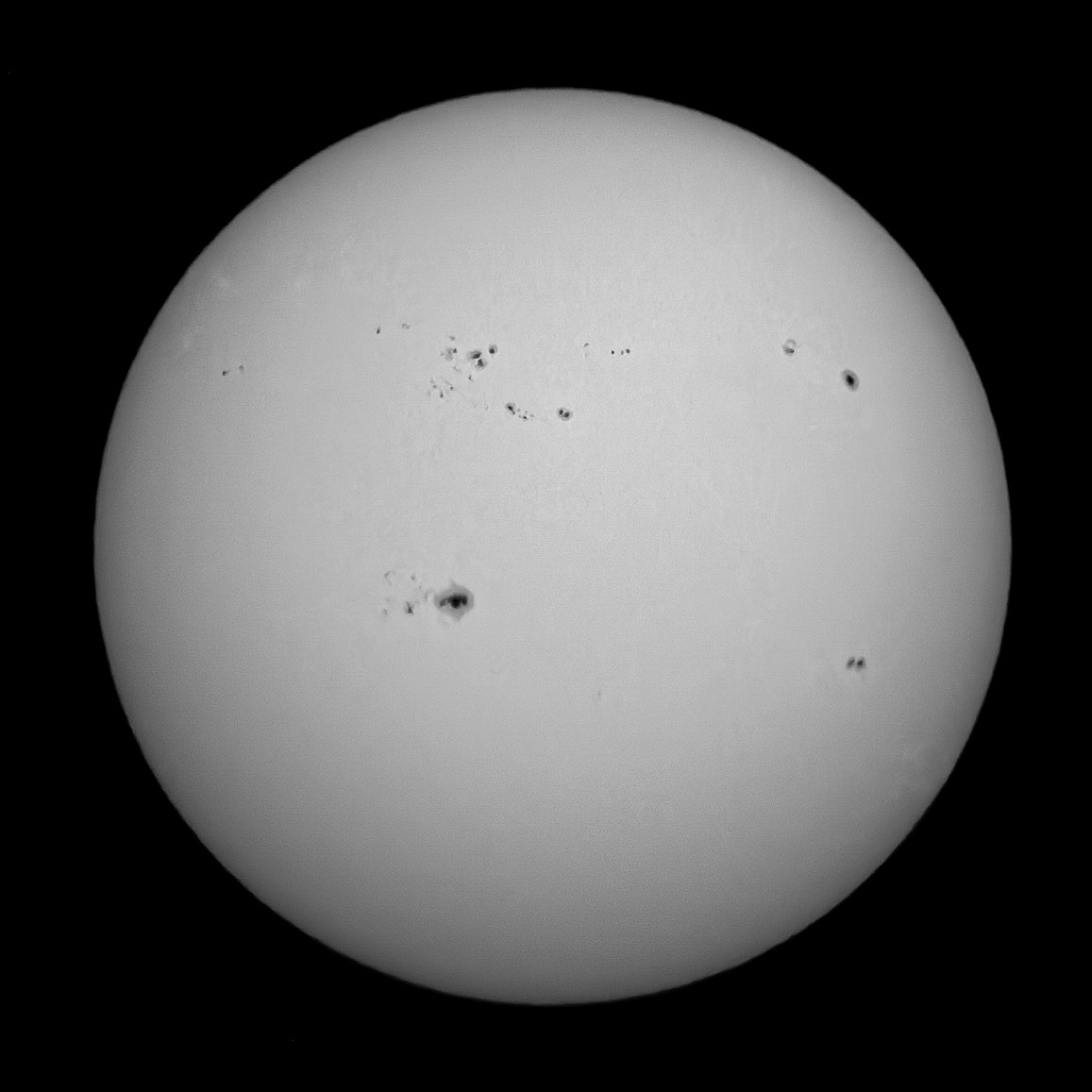
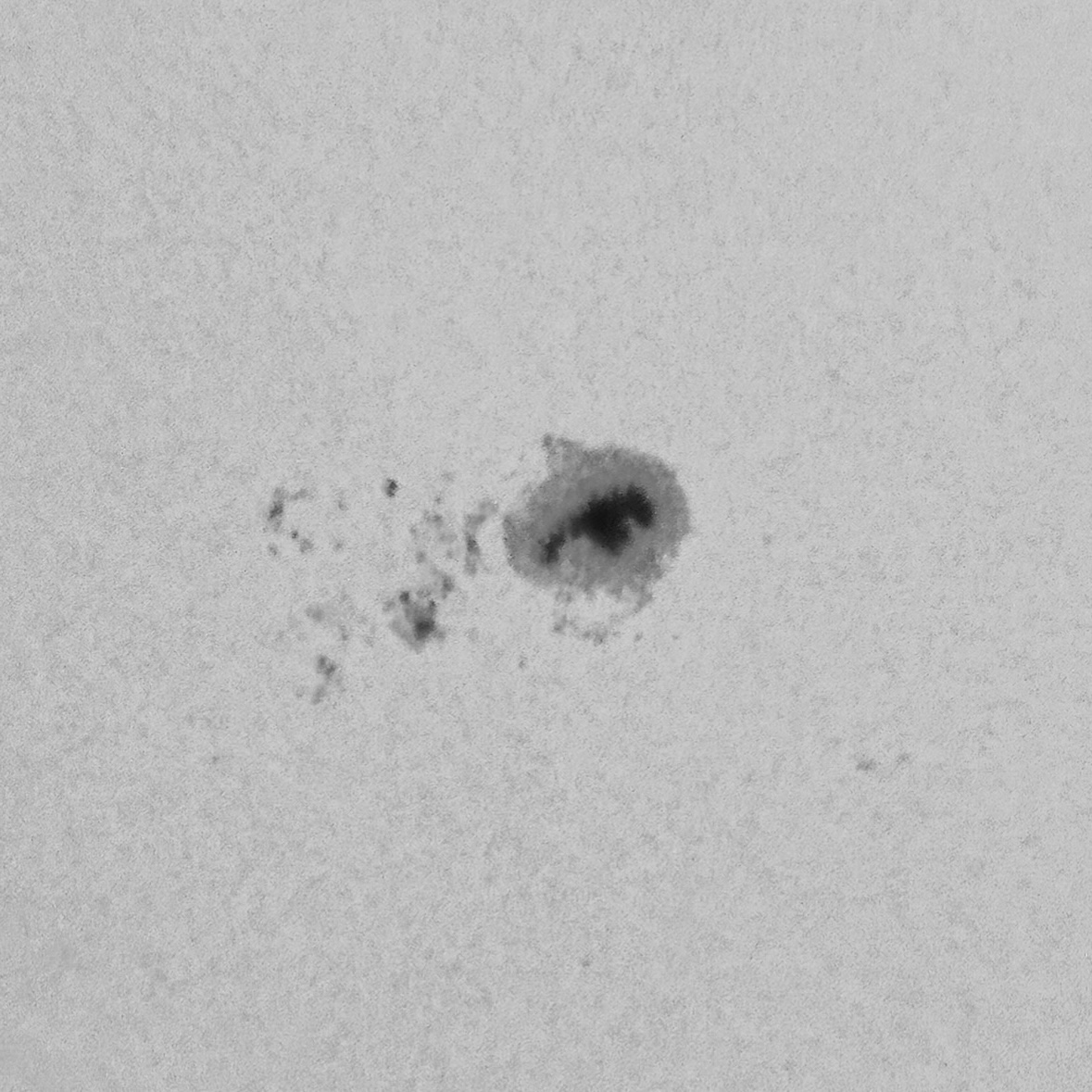


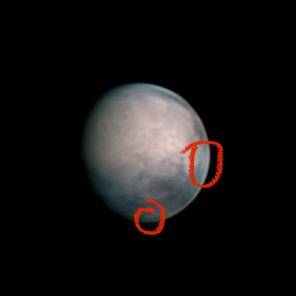
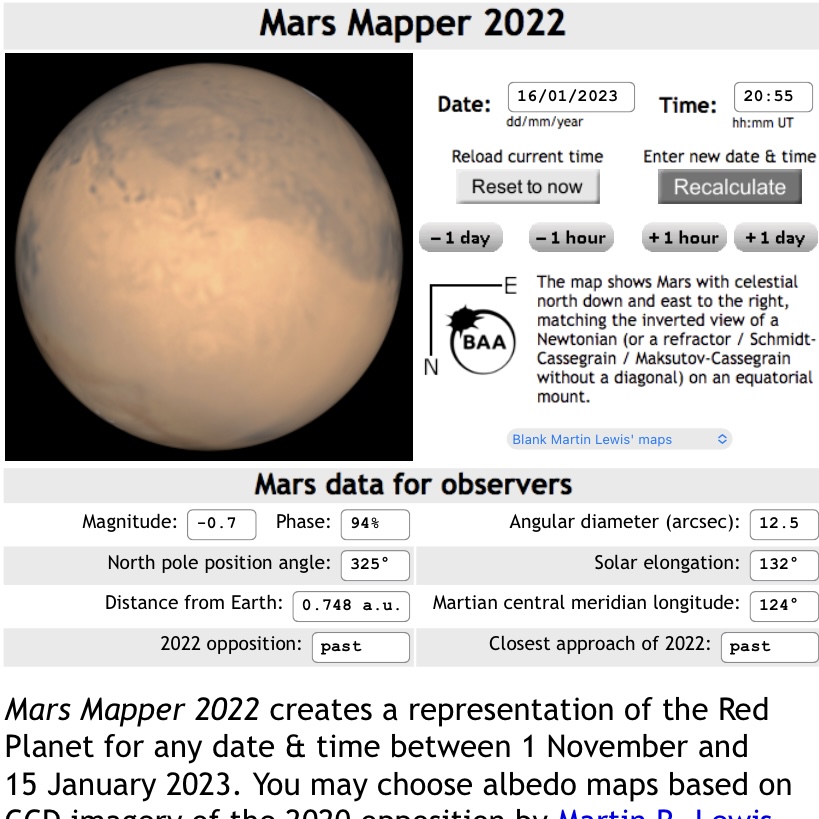
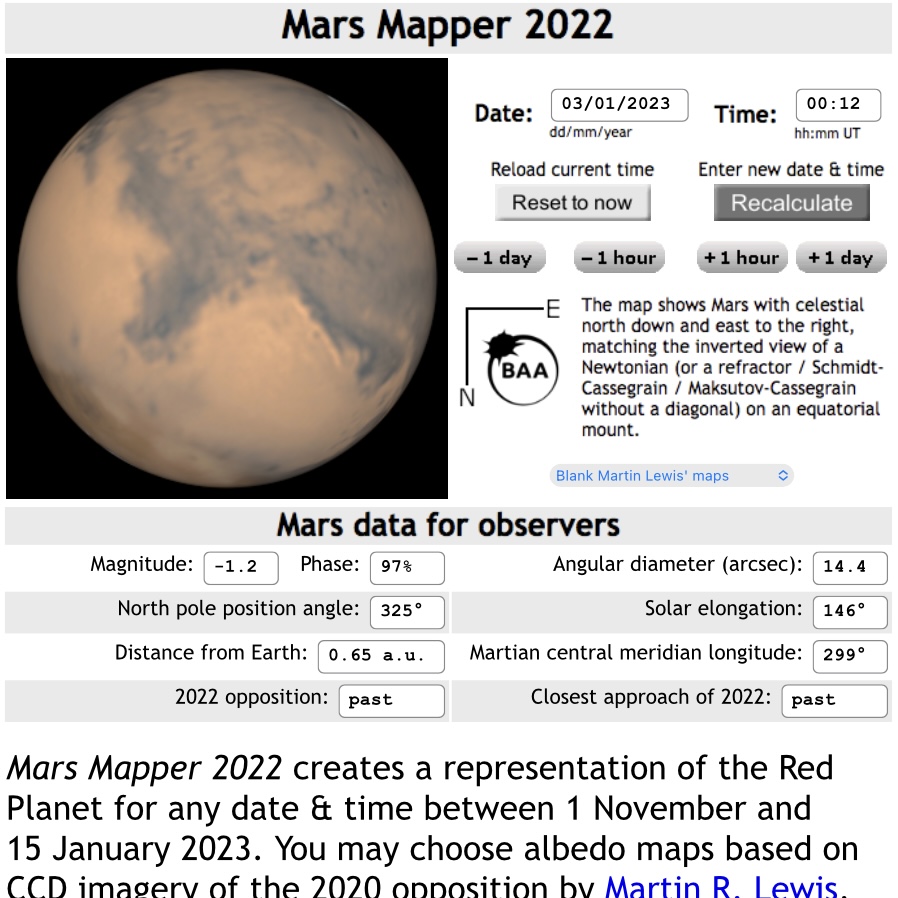

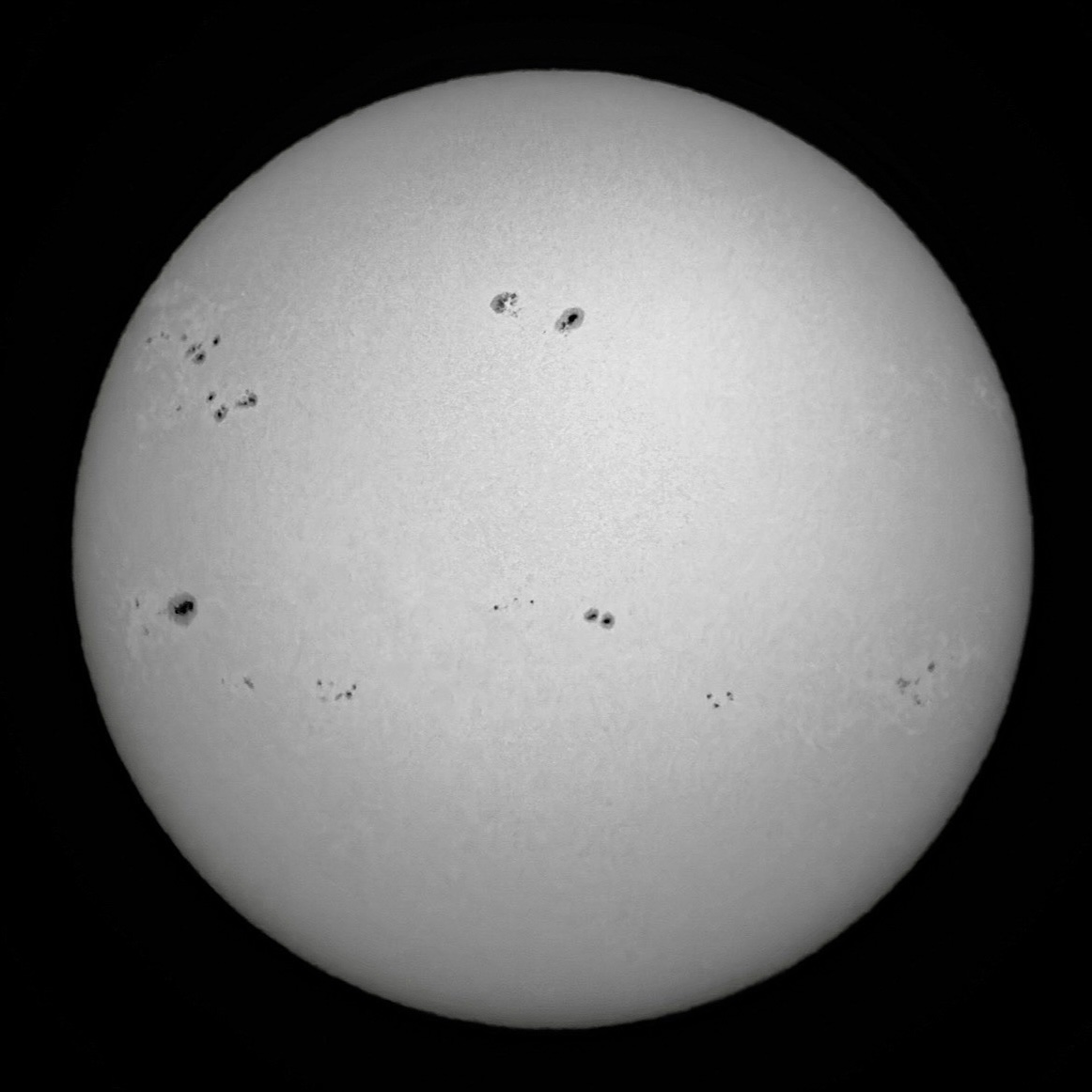

WOW - AR3190 looking amazing today 20th Jan 2023
in Observing - Solar
Posted
I had a look this morning through the telescope and through some eclipse glasses. You can easily make it out with just the glasses. Busy this afternoon and this evening so it’s great getting something in!